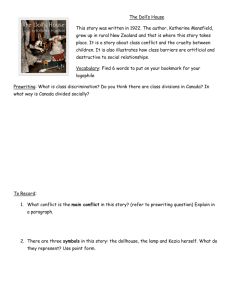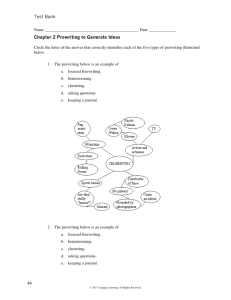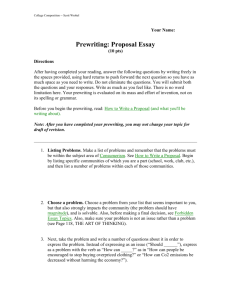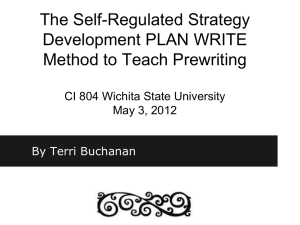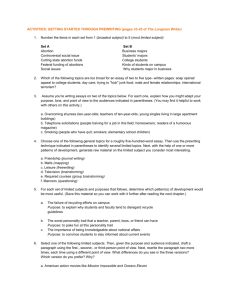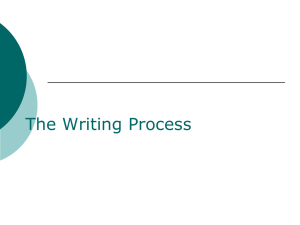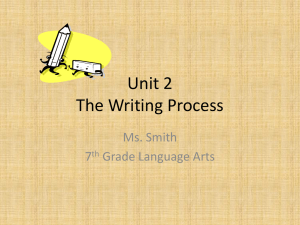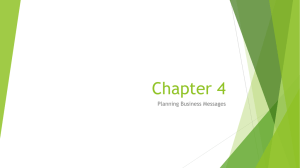Prewriting serves two functions. Initially, prewriting is a way to create
advertisement
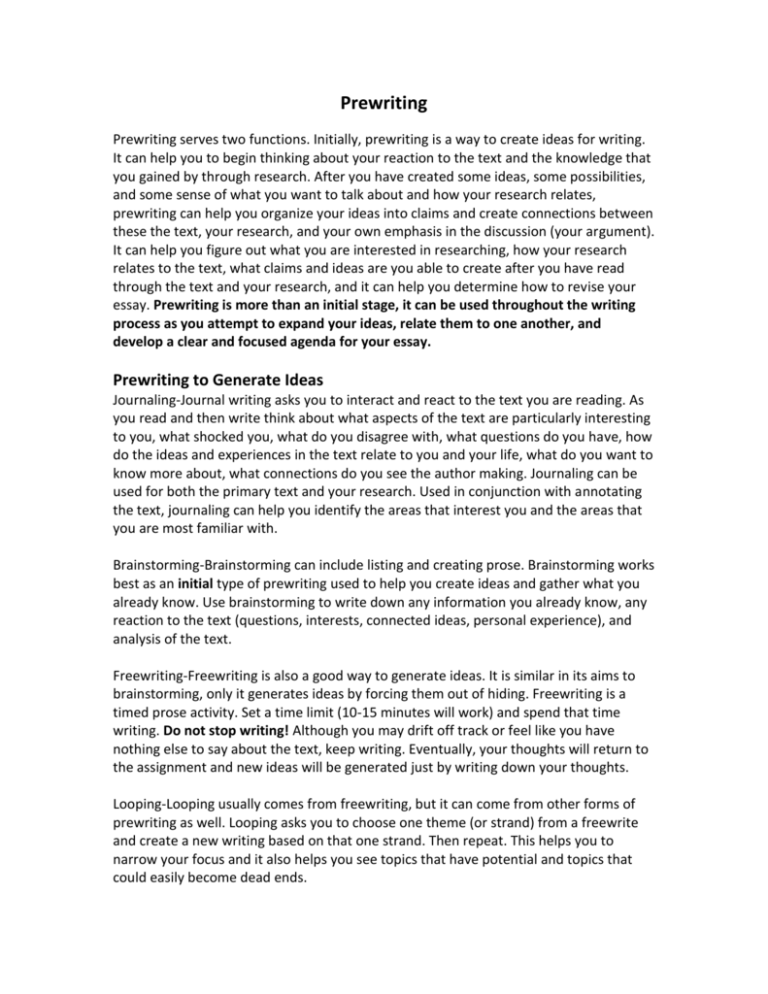
Prewriting Prewriting serves two functions. Initially, prewriting is a way to create ideas for writing. It can help you to begin thinking about your reaction to the text and the knowledge that you gained by through research. After you have created some ideas, some possibilities, and some sense of what you want to talk about and how your research relates, prewriting can help you organize your ideas into claims and create connections between these the text, your research, and your own emphasis in the discussion (your argument). It can help you figure out what you are interested in researching, how your research relates to the text, what claims and ideas are you able to create after you have read through the text and your research, and it can help you determine how to revise your essay. Prewriting is more than an initial stage, it can be used throughout the writing process as you attempt to expand your ideas, relate them to one another, and develop a clear and focused agenda for your essay. Prewriting to Generate Ideas Journaling-Journal writing asks you to interact and react to the text you are reading. As you read and then write think about what aspects of the text are particularly interesting to you, what shocked you, what do you disagree with, what questions do you have, how do the ideas and experiences in the text relate to you and your life, what do you want to know more about, what connections do you see the author making. Journaling can be used for both the primary text and your research. Used in conjunction with annotating the text, journaling can help you identify the areas that interest you and the areas that you are most familiar with. Brainstorming-Brainstorming can include listing and creating prose. Brainstorming works best as an initial type of prewriting used to help you create ideas and gather what you already know. Use brainstorming to write down any information you already know, any reaction to the text (questions, interests, connected ideas, personal experience), and analysis of the text. Freewriting-Freewriting is also a good way to generate ideas. It is similar in its aims to brainstorming, only it generates ideas by forcing them out of hiding. Freewriting is a timed prose activity. Set a time limit (10-15 minutes will work) and spend that time writing. Do not stop writing! Although you may drift off track or feel like you have nothing else to say about the text, keep writing. Eventually, your thoughts will return to the assignment and new ideas will be generated just by writing down your thoughts. Looping-Looping usually comes from freewriting, but it can come from other forms of prewriting as well. Looping asks you to choose one theme (or strand) from a freewrite and create a new writing based on that one strand. Then repeat. This helps you to narrow your focus and it also helps you see topics that have potential and topics that could easily become dead ends. Listing-Making lists of interesting facts, statistics, ideas, and connections from the text and from your research may indicate what you find interesting. Make another list that includes all of the possible topics that your research and interests could yield. Then attempt to create a thesis statement for each of these topics. Draw-create visual representations of what is discussed in the text and in your research. How is the information in the text physically connected to the information in your research? Do it overlap (visually the images are interchangeable)? Is each creating a slightly different version of the same experience? Are the images quite different from one another? Prewriting to Organize Ideas Cubing-Cubing is effective for both generating ideas and organizing them. Think of a cube. It has 6 sides all connected to each other in one way or another. Cubing asks 6 questions that are also connected to each other in one way or another. In order to use cubing as a prewriting activity, you need to have an idea about what your topic is, even if you are not sure how you are going to create an argument about Fast Food Nation around it. Cubing asks you to generate answers for the following questions. 1 )Describe-what does your subject look like? What size, colors, textures does it have? Any special features worth noting? 2) Compare/Contrast-What is your subject similar to? What is your subject different from? In what ways? 3) Free-associate-What does this subject remind you of? What does it call to mind? What memories does it conjure? 4) Analyze-How does it work? How are the parts connected? What is its significance? 5) Argue for or against-What arguments can you make for or against your subject? What advantages or disadvantages does it have? What changes or improvements should be made? 6) Apply-What are the uses of your subject? What can you do with it? Outline-the traditional outline is probably the most common way to organize ideas for an essay. However, it may not be the most effective way. If you are a linear thinker and find yourself organizing your class materials and your closets incessantly, outlining may be the prewriting strategy for you. If you struggle with organization, outlining may add to your frustration instead of alleviate it. Even if you are most comfortable with outlining because you have always used it, you might benefit from developing an alternative way of prewriting that seems more natural. Webbing (Mapping)(Clustering)-Webbing or Mapping is a visual organizer. Ideas are organized by becoming physically connected to each other. Although webbing is usually more abbreviated than other forms of prewriting because of the spatial limitations of the task, it doesn’t have to be. Think big! Use larger pieces of paper that allow you to develop your ideas more thoroughly. You could even type each chunk, cut it out and glue it onto a web. Webbing is helpful because ideas are actually physically connected to one another. This allows you to see how your paragraphs will take shape. A tree diagram is another form of webbing. Dramatize-Crafting your subject as if it were a play may help you to understand and organize your subject better. Staging your topic may help you to determine what and how you can create an argument around it. Think about you subject in terms of character, setting, action, etc. Action What happened? What were the results? What is going to happen? Motive Method What were the reasons behind the action? How did the action occur? What forces motivated the actors to By what means did the actors perform as they did? accomplish the action? Actors Who was involved in the action? Who was affected by the action? Who caused the action? Who was for it and who was opposed? Setting What was the time and place of the action? What did the place look like? What positive or negative feelings are associated with this time or place? Creative Prewriting-Visually representing your ideas and the way that they fit together will help you organize your ideas and identify the gaps. Color code ideas that fit together, make a three dimensional web (a mobile, if you will), revise your ideas as you go along with post-it notes (adding information or just making notes to yourself), TRY SOMETHING NEW! Always remember that your essay is YOUR ARGUMENT. You are creating insight into your text by incorporating outside research in service of your claims (not the other way around). Your DIRECTIVE THESIS STATEMENT should accurately capture your purpose for writing. Always begin with a working thesis then move toward perfecting it throughout the prewriting and drafting process. Patricia Malesh University of Arizona
